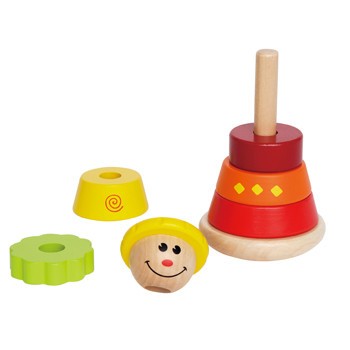B2B buyers want content that addresses their needs. It sounds so simple when we say it like that, but as marketers we know it’s not. Buyer needs are complex and varied. In fact, marketers state that their biggest challenge is creating relevant and engaging content. The evolution of the buyer’s journey and the expectations for compelling content mean that buyer personas must be more comprehensive than ever before. Building robust buyer personas that fuel a successful content marketing strategy must involve more than just marketing. Here are three essential steps marketers must take to build effective, accurate buyer personas.
 1. Sales Insights
1. Sales Insights
Your sales team engages with prospects and customers every day – which means they’ve acquired a plethora of great information. Talk to your sales team – including them not only helps build a better persona, but it also will ensure they’re eager to leverage the personas and the content you create. In addition to typical demographic information, ask your sales team the following types of questions:
- Which titles are the deciders and which are the influencers?
- What pain points do buyers have that they’re looking to address with a solution like ours?
- What benefits do buyers want to achieve with a solution like ours?
- What are a buyer’s primary buying criteria for evaluating and purchasing a solution like ours?
- What do buyers value most in a solution like ours in terms of how it boosts their job performance or how it helps them achieve their goals?
- What are the concerns or major questions about selecting a solution like ours?
- Are there barriers from particular titles or departments within a buyer’s organization to selecting our solution?
- What other solutions do buyers consider and what differentiators cause them to choose our solution? What differentiators cause them to choose other solutions?
- What information are buyers looking to learn as they engage with you, or what questions do they typically ask?
- How do buyers prefer to communicate with you? Email, in-person, phone, social networks?
2. Customer Interviews
The best buyers to interview are those who are recent customers. The thoughts and experiences they had throughout each step in their buying process are fresh in their minds, allowing them to provide more accurate, detailed responses. Also select buyers who align with as many aspects of your current buyer personas as possible. Never interview buyers who are currently in the purchase process.
Also, customers actually like being interviewed – they appreciate your wanting to understand your buyers more and enjoy providing feedback they think will be helpful. Don’t be afraid to ask more specific questions off the cuff based on their responses to your scripted questions – sometimes these details reveal the best insights (see tips for interviewing customers). Some sample questions include:
- What are the day to day business duties you fulfill or oversee?
- What are your personal goals as it relates to your job?
- What are your current business challenges?
- Do you have any upcoming major initiatives?
- What are your fears? What keeps you up at night?
- What is the primary need you want a solution like ours to fulfill for you, or the primary pain you want it to alleviate?
- What are your primary buying criteria (including critical capabilities) for purchasing a solution like ours and why?
- What other solutions were you evalutaing and what differentiators caused you to choose our solution?
- What were your concerns or objections about selecting a solution like ours?
- What is your role in the buying process for a solution like ours?
- What type of buying experience do personally like to have? (formal, collaborative, informal, in person, frequent communication, structured, etc.)
- Where do you like to learn about your industry and about other companies and products?
3. Data Analysis
Integrating your CRM and MA data with your buyer personas is critical to validating the accuracy of your personas, as well as adapting to changing personas. Evaluate your CRM data to understand who (the title and role) from your customers actually purchased your solution. Also review the sales pipeline activities to see who sales is actively engaged with, as well as marketing automation data to understand who marketing is targeting and nurtuting. You want alignment here – that marketing is creating and targeting content to who’s actually purchasing the product. Sales data can also reveal changing roles of buyers, or different personas altogether. It’s not uncommon that as industries shift, new departments and roles emerge or existing personas take on new responsibilities. These changes should be reflected on both the marketing and sales sides. For your buyer personas to give you the insights you need, building them must be a collaborative, multi-dimensional, and ongoing process.


